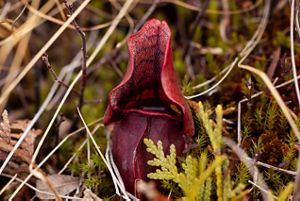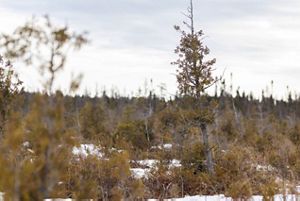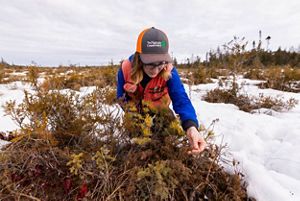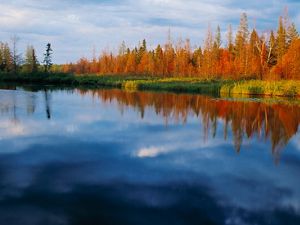Description
Why TNC Selected This Site
The Sand Lake/Seven Beavers landscape is a vast, virtually unfragmented lowland conifer ecosystem with a mosaic of carbon-rich peatlands and forested uplands, and is recognized as an area of outstanding conservation value in the state.
The preserve straddles the continental divide, with the Rainy River-Headwaters watershed flowing north to the Arctic Ocean, and the St. Louis River watershed flowing into Lake Superior en route to the Atlantic Ocean. The Sand Lake/Seven Beavers landscape is unique in its exceptional habitat quality, the size and complexity of the vast peatlands, and the large lakes and rivers it encompasses.
A hallmark of the Sand Lake/Seven Beavers landscape is the mixed public and private ownership. This blend of ownership offers TNC an excellent opportunity to collaborate with partners on forest management and protect a substantial portion of the region's remaining lowland conifer forest.
TNC's property is essentially the only private property in the core of this area. The Sand Lake/Seven Beavers landscape also includes other protected and managed lands, such as the Sand Lake Peatland Scientific and Natural Area and surrounding watershed protection area (Minnesota DNR), the recently designated Big Lake/Seven Beaver Research Natural Area (U.S. Forest Service-Superior National Forest), designated old growth forests, as well as other U.S. Forest Service, state- and county-managed forest lands.
TNC is actively working with these land managers through the Sand Lake/Seven Beavers Collaborative to preserve the landscape via a coordinated approach to forest management and conservation. TNC retains the Sand Lake/Seven Beavers Preserve as private property and continues its tradition of local recreational use.
What TNC Has Done/Is Doing
The Sand Lake/Seven Beavers landscape harbors one of the state's largest areas of lowland conifer habitat. The lowland conifer ecosystem, with large unfragmented wetlands and numerous rare plant species, is unusual within the Superior Mixed Forest ecoregion and Great Lakes. Highlights of this area include rare plants such as Michaux's sedge and sensitive aquatic communities including the Sand Lake peatlands.
According to ecologists, the relatively undisturbed quality of the wetland habitats here elevates their importance to native species and ecosystems in the Arrowhead and Great Lakes. Additionally, the lack of access roads and recent human disturbance has limited the establishment and spread of exotic and invasive species.
TNC has worked with the U.S. Forest Service, Minnesota DNR, St. Louis County and Lake County to collaboratively manage over 4,500 acres of land in the broader Sand Lake/Seven Beavers landscape, including planting over 1.5 million tree seedlings, as well as providing care and tending to planted seedlings to help them thrive.
On TNC’s Sand Lake/Seven Beavers Preserve, more than 1,500 acres have been treated to preserve and enhance forest conditions, including planting more than 250,000 tree seedlings, primarily long-lived native conifers such as white spruce, eastern white pine and northern white cedar.
The primary goal of management on the Sand Lake/Seven Beavers landscape is to maintain and improve ecological integrity, as well as preserve its terrestrial, wetland and aquatic systems.








